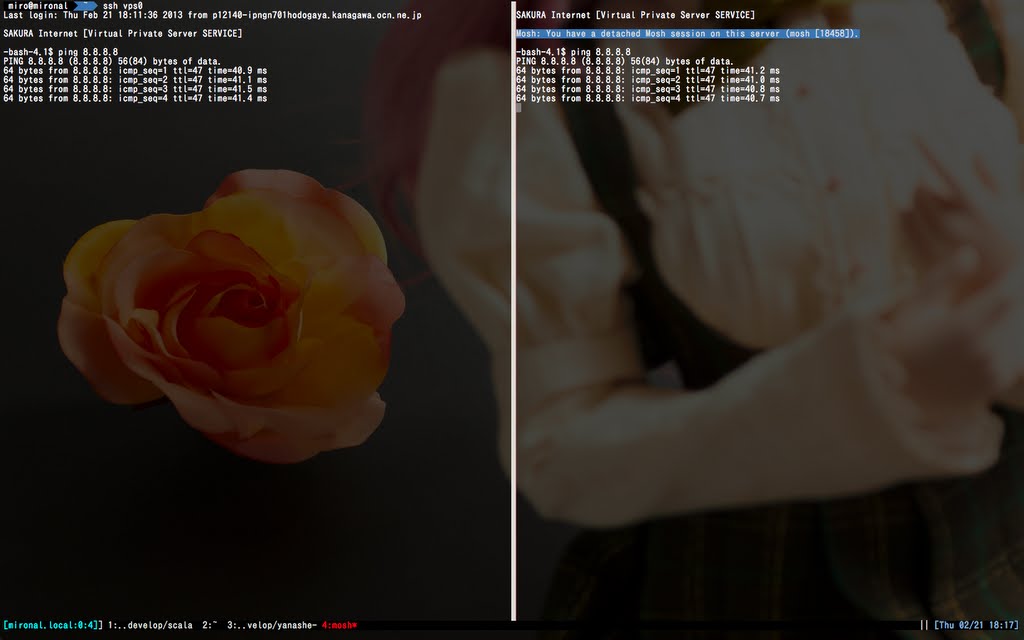

With Mosh, the server and client both maintain a snapshot of the current screen state. (This includes TELNET, RLOGIN, and SSH.) Mosh works differently and at a different layer. Remote-shell protocols traditionally work by conveying a byte-stream from the server to the client, to_be interpreted by the client’s terminal. Instant keystroke response, robust to roaming.
MOSH MOBILE SHELL FREE
Mosh is free software, available for GNU/Linux, BSD, macOS, Solaris, Android, Chrome, and iOS. It’s more robust and responsive, especially over Wi-Fi, cellular, and long-distance links. Mosh is a replacement for interactive SSH terminals. Remote terminal application that allows roaming, supports intermittent connectivity, and provides intelligent local echo and line editing of user keystrokes. The application is written originally by Keith Winstein for Unix like operating system and released under GNU GPL v3. It is an application similar to SSH, but with additional features. It canbe used as SSH and contains more feature than Secure Shell. This might be the reasons for why it isn't enabled by default.Mosh, which stands for Mobile Shell is a command-line application which is used for connecting to the server from a client computer, over the Internet. A known-plaintext attack might become easier if the attacker knows the interval and contents of an idle connection. I highly recommend turning this feature on if you run into this regularly, but you should also know about the slight security risk it may impose. prevent you from having half-closed tcp sessions hanging for hours untouched. It is being noted that those keep-alives also help to, uhm, keep long-idling connections alive, i.e.

Opposed to the other option TCPKeepAlive, this is checked within the encrypted channel and is not spoofable. Whenever three of them fail consecutively (the default of ServerAliveCountMax), the client considers the connection as hung and closes it. This makes ssh client send application-level keep-alives every 15 seconds. You may also want to setup application-level keep-alives for SSH to prevent it from freezing on connection issues. terminates an ssh session 5 layers deep and keeps the other 4 intact. (This only applies to ~s that directly follow an Enter.) That is to say that Enter ~ ~ ~ ~ ~. Notice that because hitting ~ ~ causes ssh to send the ~ instead of intercepting it, you can address N nested ssh connections by hitting ~ N times. You can close the list of Escape sequences by hitting Enter. (Note that escapes are only recognized immediately after newline.) ~~ - send the escape character by typing it twice ~& - background ssh (when waiting for connections to terminate) ~V/v - decrease/increase verbosity (LogLevel) terminate connection (and any multiplexed sessions) More of these escape sequences can be listed with Enter, ~, ?: Supported escape sequences: (Keep in mind that in international keyboards where ~ is set to be a composing character, you have to hit it twice: Enter, ~, ~.

To kill the current session hit subsequently Enter, ~. Normal keys are forwarded over the ssh session, so none of those will work.


 0 kommentar(er)
0 kommentar(er)
